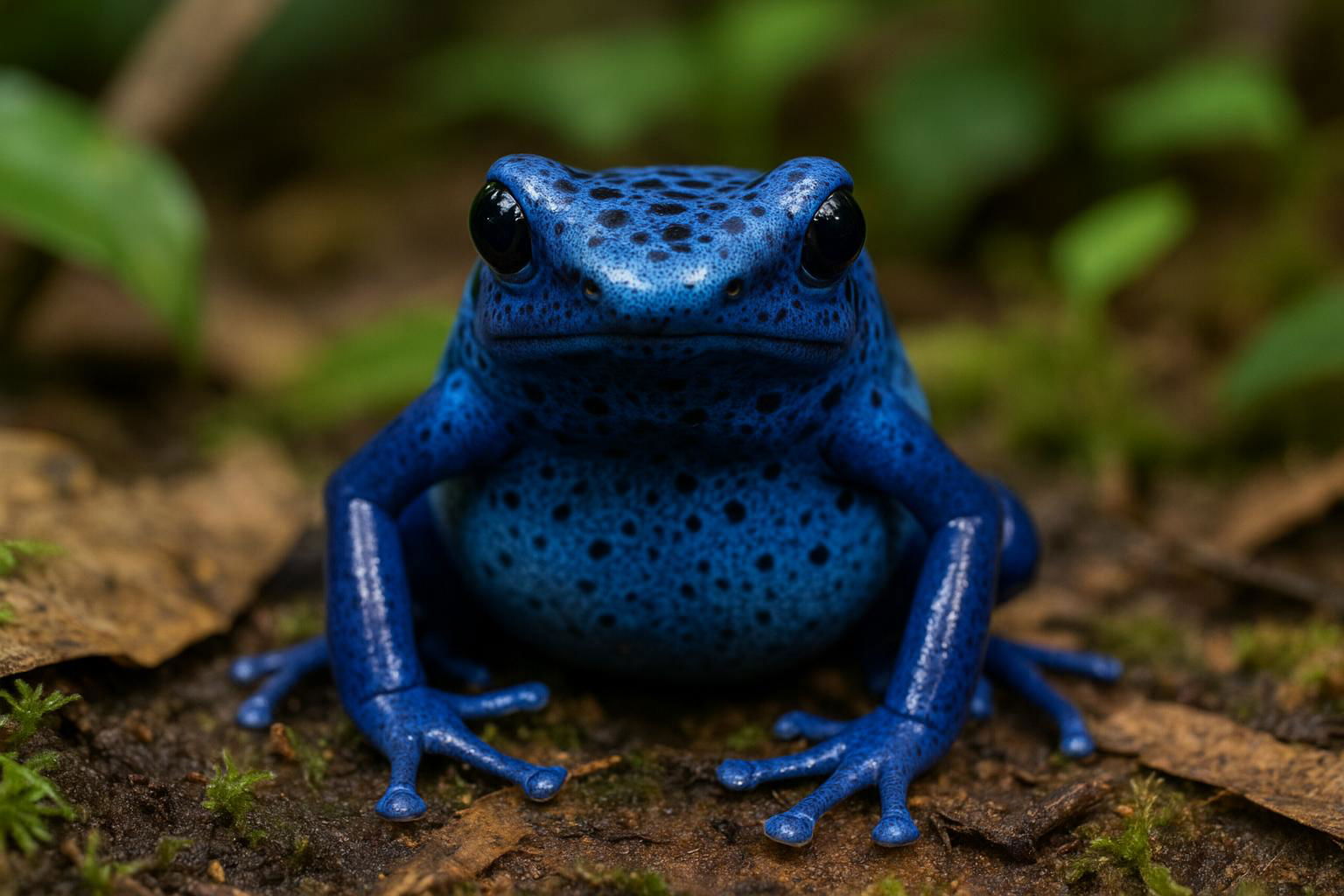
Poison Dart Frog
Dendrobates tinctorius
The Poison Dart Frog, scientifically known as *Dendrobates tinctorius*, is a small yet striking amphibian native to the tropical rainforests of Central and South America, particularly in countries like Brazil, Suriname, and French Guiana. It is renowned for its vibrant and diverse coloration, often displaying bright blues, yellows, and blacks, which serve as a warning to potential predators about its toxicity. This vivid pigmentation is a classic example of aposematism in nature.
Adult Poison Dart Frogs typically measure around 3 to 5 centimeters in length. Despite their diminutive size, they possess one of the most potent toxic substances found in any animal, known as batrachotoxin. This toxin deters many predators, making them relatively safe from predation. The frogs' diet mainly consists of ants, termites, and other small invertebrates, which are believed to contribute to their toxicity.
These frogs play a significant role in their ecosystem, both as predators of small insects and as prey for the few species that have developed a resistance to their poison. The vibrant colors and survival strategies of *Dendrobates tinctorius* continue to captivate scientists and nature enthusiasts alike, emphasizing the delicate balance of their environment and the importance of conservation efforts to protect these fascinating creatures and their habitats.

 All Species & Breeds
All Species & Breeds
 Highland Cattle
Highland Cattle
 Miniature Donkeys
Miniature Donkeys
 All Species Directory
All Species Directory
 Highland Cattle in Virginia
Highland Cattle in Virginia
 Miniature Donkeys in Texas
Miniature Donkeys in Texas












